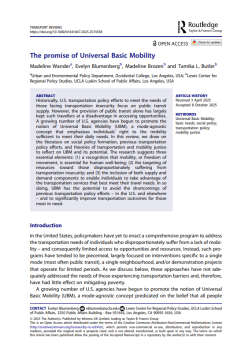Life in the Bus Lane: Best Practices for Envisioning a Better Los Angeles
Despite cuts to bus service in Los Angeles, bus ridership has remained high compared to other cities, showing L.A.’s reliance on the bus. Bus riders deserve better service, and transit agencies have been turning to the bus lane as a low-cost and reliable way to improve bus service. This study answered the research question through case studies of bus lane implementation in Boston, Chicago, Seattle, and Sydney. This study found that pilot project bus lanes, also known as tactical lanes, provide immediate low-cost benefits while also collecting public input from riders and motorists.
Bus lane implementation can be a political battle, and often hinges on the support of key political and transit agency players. Matching the type of bus lane to the corridor requires consideration of physical space and political realities. Automated bus lane enforcement through cameras is low cost and avoids interactions between police and people. Bus lane designs that prevent drivers from parking or driving in the lane, also known as self-enforcing design, should also be considered.
Bus lanes might not win over choice riders from driving their cars, but they do prioritize bus riders, which can boost loyalty and retain ridership. The working class, immigrant, and BIPOC bus riders of LA should be prioritized in transit projects as they are the lifeblood of the system.



